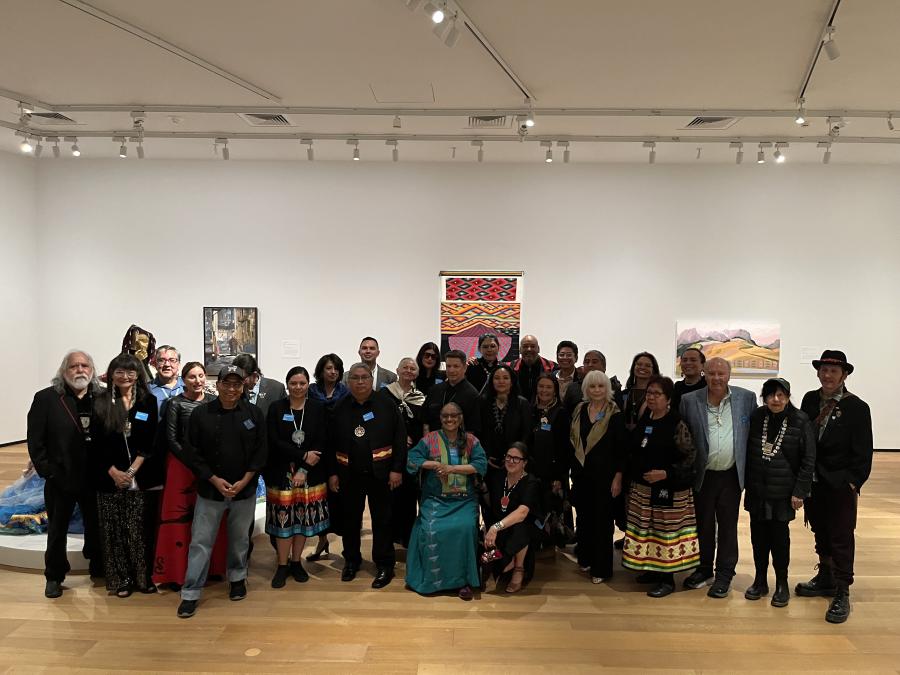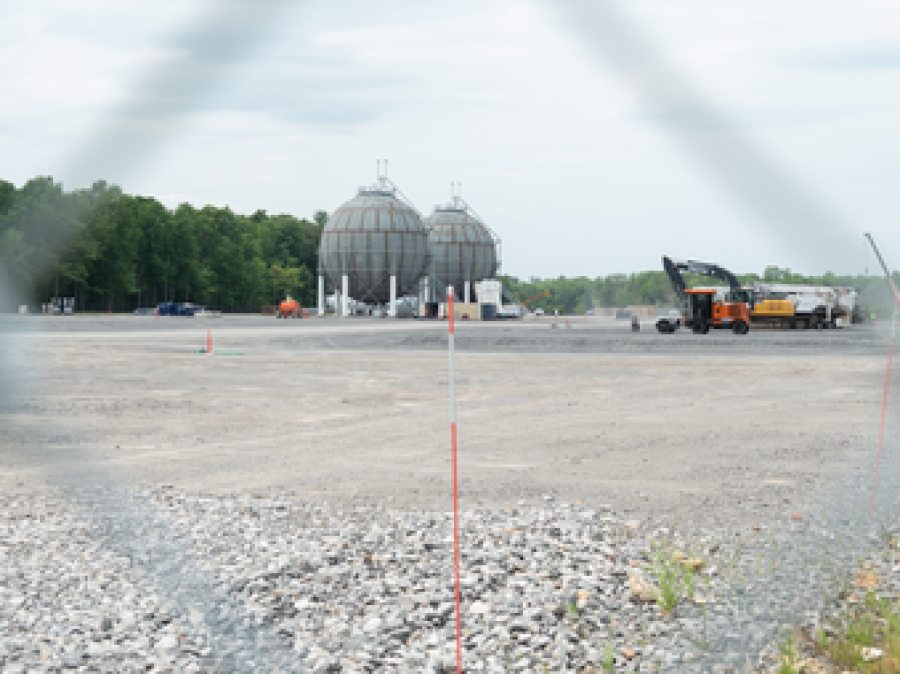
Nestled amongst the beauty of Boston’s historic coastline lies an intensifying disagreement over Long Island, one of the 34 islands comprising Boston Harbor Islands National and State Park, part of the U.S. National Register of Historic Places, and, less well known, the site of a former concentration camp and Native burial ground.
In 2014, a 3,400-foot bridge connecting Long Island to Quincy’s Moon Island was closed down and demolished due to structural degradation. In 2018, Boston Mayor Marty Walsh announced his $92 million project to rebuild the bridge by 2021 and construct a drug treatment center and recovery campus on Long Island. The City of Quincy contests the construction of a new bridge and is fighting to prevent the project’s implementation, claiming that a new bridge will increase traffic.
Lesser known to the public are the Native American Tribes who share an important stake in the outcome of this battle. The genocide, ethnic cleansing, and colonial policies wreaked upon Indigenous Peoples is by colonial Massachusetts is largely unknown, even in today’s Massachusetts, as the state mandated history curriculum for secondary education begins at the American Revolution.
The King Philip’s War (1675-1680) was the last major effort by a number of the Indian nations in today’s southern New England region to resist English colonial military and political control over their lands. Following a retaliatory raid in Swansea (New Plymouth Colony) due to an unaddressed killing of a Native man, the English colonies of Massachusetts Bay and Connecticut used the Swansea incident to join with New Plymouth to unilaterally take coercive and military actions against many of the Indian nations of the region.
Among the coercive actions taken by the United Colonies of New England, the Massachusetts Bay Colony set up what became a concentration camp system on August 30, 1675, ordering all Indians (“all those Indians, that are desirous to approve themselves faithful to the English”) into a series of Indian villages turned internment zones (the rest of the colony was considered a “free-fire zone”). The civilian Native populations from these zones/camps were later either forcibly removed to Deer Island, or fled the English controlled areas as refugees.
Deer Island then became the centerpiece of the Massachusetts Bay Colony concentration camp system, and from that island Indians were later transferred to Long Island (also in Boston Harbor). The exact number of the interned Indians on the Boston Harbor Islands during the war, the number of deaths that occurred due to the conditions of the camps and location of the concentration camp burial ground sites remain unknown.
During the winter of 1675-1676, hundreds of Native people suffered severely from the conditions of the camp on Deer Island, conditions that included freezing temperatures, limited food supplies and illness brought on by contaminated clams. If the Native persons attempted to leave the islands and return to the mainland, settlers were encouraged to “kill and destroy them as they best may or can.”
The Native men interned were pressured to join an English proxy Native militia force that was used to attack the Native people around the Wachusett area and other areas. When the English people began a process of repatriation of the Indian people on the islands back to the mainland, they also restricted release from internment to those who would cooperate with the English: “4. That such Indians as shallbe impeached by name by any English, as not to be confided in or meet to haue this liberty, be continued at the island, vntil the council, on hearing the matter, shall take further order for their disposal.” ((The Massachusetts Bay Colony Records of 1675-1686 (Volume 5, page 86)).
Along with Deer Island, Long Island was also used as a concentration camp, and the Commonwealth of Massachusetts informed the MICDI Indian tribes in 1992 that there remained a large Indian burial ground on that island from the concentration camp era. Since 1996 the MICDI Tribal governments have sought the transfer of the title of the land(s) on Long Island of the burial ground site of 1676 (identified by the Commonwealth) from the City of Boston to federal multi-tribal Indian trust status.
For decades, the governments of the Muhheconneuk Intertribal Committee on Deer Island (MICDI) and the Muhheconnew National Confederacy (MNC), recently joined by the North American Indian Center of Boston (NAICOB), have attempted to work with the City of Boston to protect Indian burial ground sites on the Boston Harbor Islands from infrastructure projects and to appropriately honor and memorialize the Native people held there and those that died there during the war.
The concerns of the MICDI governments took formal shape in 1991, as the tribes publicly noted the anniversary of the first forced removal to Deer Island (from Natick) in October of that year. A formal Accord was reached between tribal representatives and the state agency overseeing construction on that island, the Massachusetts Water Resources Authority (MWRA), on December 27, 1991, guaranteeing to the tribes information about (and permission to be on site) of the planned demolition of the prison on the island, the allowance of the tribes to conduct their own archaeological studies on the island, and guaranteeing the tribes’ right for their own memorial on the island.
In 1985, the Environmental Protection Agency’s Public Archeology Laboratory partnered with the University of Massachusetts Boston to conduct an archeological survey of both Long Island and Deer Island prior to the construction of a wastewater treatment facility on Deer Island. The survey results concluded that Deer Island yielded “no potential significant prehistoric or historic period cultural resources.” The report also established that while “cultural resources may have survived in the area as remnants it is not likely that they would have retained sufficient integrity to meet normal standards of significance.” “Normal standards of significance’’ and according to whom, was not defined.
Collaboration between the MICDI governments, and state and federal bodies over the past 30 years has fluctuated in its degree of success. When the sewage treatment construction began on Deer Island in 1991, it appeared that the MWRA would work with the Tribes to erect a memorial on the island as well as grant them the right to conduct their own archeological survey. The Muhheconneuk Intertribal Committee on Deer Island revealed, however, that in June 1992 and again in September 1994 the MWRA backed out of these agreements, and the agency was caught removing soil (which contained bones) from the island, in violation of its commitment to the MICDI governments that it would not do so, and dumped the Deer Island soil into the Quincy Quarry.
The 1985 archeological survey of Long Island did however yield results necessary to garner historical preservation. The report disclosed that “Long Island is considered to be a significant complex of prehistoric and historic period cultural resource much of which may be eligible for inclusion in the National Register” of historic places.
In the late 1990s, Tribes began to gain traction in their efforts to receive proper recognition of the atrocities committed against Native Americans on the Harbor Islands. The Muhheconnew National Confederacy and the City of Boston partnered in 1996 to host a commemoration on Long Island of Proclamation Day, August 30,1675 in remembrance of the internment of Native Americans and suspension of their civil liberties.
The Boston Harbor Islands National Park was also founded in 1996. The MICDI and the MNC worked jointly with the City of Boston and the National Park Service (NPS) to support the federal legislation that created the park, once the original bill was amended to require mandated policies and programs “Protecting and preserving Native American burial grounds connected with the King Philip’s War internment period and other periods” in the required park plan (16 USC 460 kkk (f)(2)(B)(vi)). While collaboration between groups appeared progressive in the initial years of the park’s creation the MICDI and MNC later found of their efforts to implement the law was blocked by the Partnership board, the board that was created in the same federal legislation, and included representation by the NPS, Massachusetts state agencies (including the MWRA), the City of Boston and other entities. Since the July 17, 2001 vote to approve the park plan in violation of the law that created the park, relations between the board and the MICDI/MNC governments have remained frozen and the island owners have proceeded with plans for the islands indifferent to the law and the intent of Congress to protect the Indian burial grounds in coordination with the respective Native governments.
After enduring years of fruitless negotiations with state institutions, today the plans for bridge construction offers a new challenge and opportunity to address the native burial grounds on Long Island. The MICDI and MNC, with the support of the North American Indian Center of Boston, have opened dialogue with the City of Boston to ensure that the burial grounds and surrounding land containing historically poignant artifacts will remain preserved and untouched by possible construction.
Tribal organizations were confronted by another setback, however, on October 2, 2018, when the Committee on Planning, Development, and Transportation and Committee on Homelessness, Mental Health, and Recovery held a “joint hearing to discuss the current status of plans for the new bridge.” While third party organizations were permitted to provide testimony neither the MICDI, MNC, nor NAICOB received an invitation to attend the hearing. The Tribes lamented the passage of a vital opportunity to contribute input due to the city’s failure to inform and consult Tribal representative bodies of the hearing’s formation.
The Muhheconneuk Intertribal Committee on Deer Island published a written testimony on October 16, 2018, in response to their unintended absence at the October 2 hearing. The MICDI maintains that while it has not yet taken a stance on the construction of a new bridge, it remains imperative that Tribes be informed and consulted on future policy decisions by both the Boston and Quincy governments.
On Monday April 1, 2019, a hearing was held at Quincy City Hall for the purpose of allowing the Muhheconneuk Intertribal Committee on Deer Island and the North American Indian Center of Boston to share the dark history that took place on the Harbor Islands, voice potential concerns regarding the construction of a new bridge, and propose solutions to preserve Long Island’s burial grounds. Testimony by a member of the North American Indian Center of Boston’s board during that hearing resonated powerfully when he declared, “These aren’t just bones in the soil. They have names that are attached to them.”
The question of development on Long Island provides an opportunity for us to reckon with a dark history in a public way and educate our fellow citizens about the rich cultures and histories of local Native American Tribes. The cities of Quincy and Boston are required to adhere to international human rights standards enshrined in the UN Declaration on the Rights of Indigenous Peoples, endorsed by the United States in 2007, when engaging with the human remains that exist on Long Island, and can take this opportunity to engage Tribes in the area with the goal of seeking their free, prior and informed consent before any further projects take place that will affect these important historical sites. It is important to actively seek participation from and include any affected Tribe and First Nation whose history is connected the regional colonial governmental genocide policies of the past in any decision making that involves the remains of their ancestors.
Photo: Wikipedia: Long Island, Boston Harbor, 2008.



